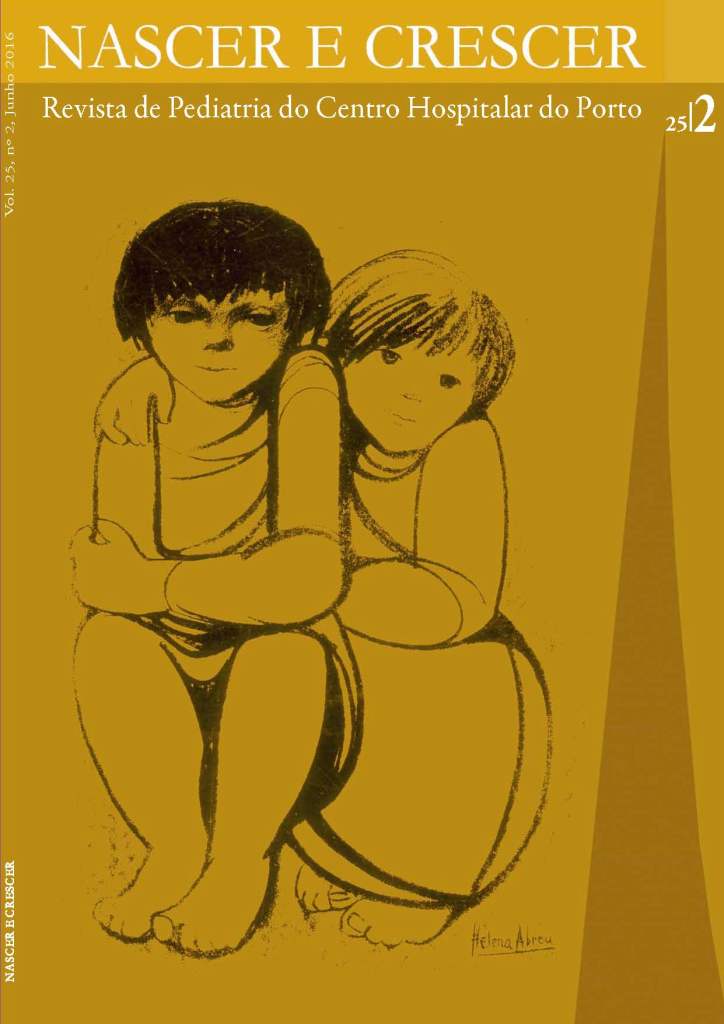NON-ALCOHOLIC FATTY LIVER DISEASE ASSOCIATED WITH HYPOBETALIPOPROTEINEMIA: REPORT OF THREE CASES AND A NOVEL MUTATION IN APOB GENE
DOI:
https://doi.org/10.25753/BirthGrowthMJ.v25.i2.9524Keywords:
APOB gene, Children, Familial hypobetalipoproteinemia, Non-alcoholic fatty liver disease, Nonalcoholic steatohepatitisAbstract
Background: Non-alcoholic fatty liver disease, the leading cause of chronic liver disease in children, is defined by hepatic fat infiltration >5% of hepatocytes, in the absence of excessive alcohol intake, evidence of viral, autoimmune or drug-induced liver disease. Conditions like rare genetic disorders must be considered in the differential diagnosis.
Case Report: Two male brothers, and a non-related girl, all overweight, had liver steatosis. One of the brothers and the girl had elevated transaminases; all three presented with low total cholesterol, low density lipoproteins and very low density lipoproteins cholesterol levels, hypotriglyceridemia and low apolipoprotein B. A liver biopsy performed in the brother with citolysis confirmed steatohepatitis and the molecular study of apolipoprotein B gene showed a novel homozygous mutation (c.9353dup p.Asn3118Lysfs17). Patients with cytolysis lost weight, however liver steatosis persists.
Conclusion: Fatty liver disease might be a consequence of hypobetalipoproteinemia. Evidence is scarce due to low number of reported cases.
Downloads
References
Kneeman JM, Misdraji J, Corey KE (2012). Secondary causes
of non-alcoholic fatty liver disease. Therap Adv Gastroenterol.
; 5:199 - 207. doi:10.1177/1756283X11430859.
Vajro P, Lenta S, Socha P, Dhawan A, McKiernan P, Baumann
U, et al (2012). Diagnosis of nonalcoholic fatty liver disease
in children and adolescents: position paper of the ESPGHAN
Hepatology Committee. J Pediatr Gastroenterol Nutr. 2012;
:700-713 doi:10.1097/MPG.0b013e318252a13f.
Labrecque DR, Abbas Z, Anania F, Ferenci P, Khan AG,
Goh KL, et al (2014). World Gastroenterology Organisation
Global Guidelines Nonalcoholic Fatty Liver Disease and
Nonalcoholic Steatohepatitis. J Clin Gastroenterol. 2014;
:467-473 doi:10.1097/MCG.0000000000000116.
Giorgio V, Prono F, Graziano F, Nobili V (2013) Pediatric
non alcoholic fatty liver disease: old and new concepts
on development, progression, metabolic insight and
potential treatment targets. BMC Pediatr. 2013; 13:40
doi:10.1186/1471-2431-13-40.
Sen D, Dagdelen S, Erbas T (2007) Hepatosteatosis with
hypobetalipoproteinemia. J Natl Med Assoc. 2007; 99:284-6.
Lam MCW, Singham J, Hegele RA, Riazy M, Hiob MA, Francis
G, et al (2012). Familial hypobetalipoproteinemia-induced
nonalcoholic steatohepatitis. Case Rep Gastroenterol 6:429-
doi:000339761.
Schonfeld G (2003) Familial hypobetalipoproteinemia: a
review. J Lipid Res. 2003; 44:878-883 doi:10.1194/jlr.
R300002-JLR200.
Lee J, Hegele R (2014) Abetalipoproteinemia and
homozygous hypobetalipoproteinemia: a framework for
diagnosis and management. J. Inherit. Metab. Dis. 2014; 37:
-339 doi: 10.1007/s10545-013-9665-4.
Whitfield A, Barrett P, Bockxmeer F, Burnett J (2004)
Lipid Disorders and Mutations in the APOB gene. Clinical
Chemistry. 2004; 50: 1725-32.
Noto D, Cefalu AB, Barraco G, Fayer F, Minà M, Yue P,
et al (2011). Plasma non-cholesterol sterols in primary
hypobetalipoproteinemia. Atherosclerosis. 2011; 216:409-
doi:10.1016/j.atherosclerosis.2010.10.050.
Alvarez F, Berg PA, Bianchi FB, Bianchi L, Burroughs AK,
Cancado EL, et al (1999). International Autoimmune Hepatitis
Group Report: review of criteria for diagnosis of autoimmune
hepatitis. J Hepatol. 1999; 31: 929-38.
EASL Clinical Practice Guidelines: Wilson’s disease (2012) J
Hepatol. 2012; 56:671-685 doi:10.1016/j.jhep.2011.11.007.
Wu J, Kim J, Li Q, Kwok PY, Cole TG, Cefalu B, et al (1999).
Known mutations of apoB account for only a small minority
of hypobetalipoproteinemia. J Lipid Res. 1999; 40:955-9.
Gutierrez-Cirlos C, Ordonez-Sanchez ML, Tusie-Luna MT,
Patterson BW, Schonfeld G, Aguilar-Salinas CA (2011)
Familial hypobetalipoproteinemia in a hospital survey:
genetics, metabolism and non-alcoholic fatty liver disease.
Ann Hepatol. 2011; 10:155-164.
Downloads
Published
How to Cite
Issue
Section
License
Copyright and Authors' Rights
All articles published in Nascer e Crescer - Birth and Growth Medical Journal are Open Access and comply with the requirements of funding agencies or academic institutions. For use by third parties, Nascer e Crescer - Birth and Growth Medical Journal adheres to the terms of the Creative Commons License "Attribution - Non-Commercial Use (CC-BY-NC)".
It is the author's responsibility to obtain permission to reproduce figures, tables, etc. from other publications.
Authors must submit a Conflict of Interest statement and an Authorship Form with the submission of the article. An e-mail will be sent to the corresponding author confirming receipt of the manuscript.
Authors are permitted to make their articles available in repositories at their home institutions, provided that they always indicate where the articles were published and adhere to the terms of the Creative Commons license.


